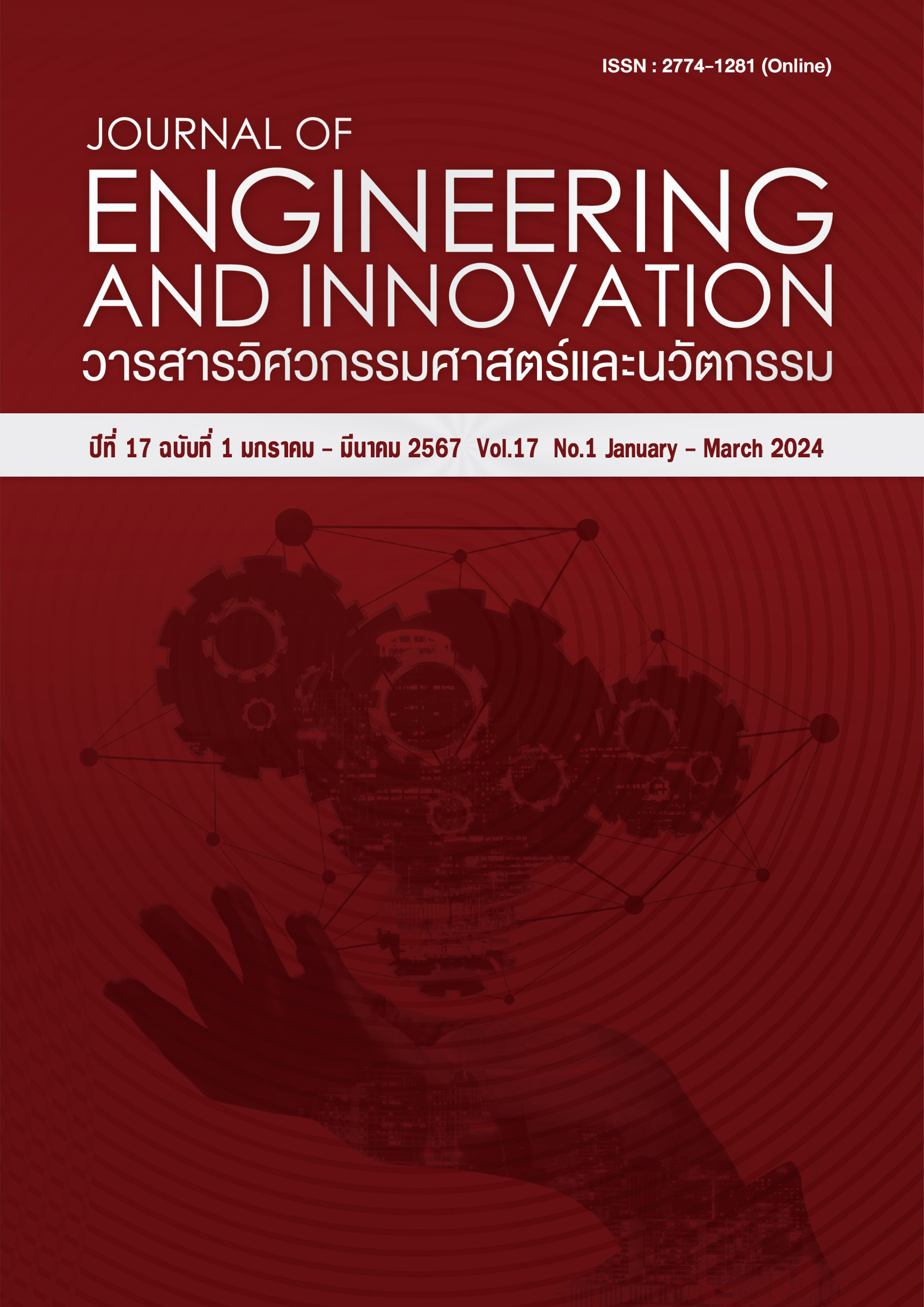Effect of addition copper metal balls on pyrolysis temperature and properties of biochar from spent coffee ground
Main Article Content
Abstract
In this study, slow pyrolysis of spent coffee ground (SCG) in cylinder shape fixed bed reactor was investigated with the aim to develop the way increasing the heating rate of SCG in the center of reactor. The small metal balls 8 mm. diameter were used as the thermal distributor within the final temperature 500°C, 50 ml/min of N2 gas flow, and 2 hrs. holding time. The results reveal that the heating rate of spent coffee ground with small metal balls (SCG+MB) was increased in the range of temperature 351.5 - 461.5°C faster than the pyrolysis of SCG and could reduce 5.98% electric consumption for heating the reactor. The yield of bio-char from experiments are not different significantly as well as the content of Volatile matter, ash, fixed carbon and higher heating value of the products. The specific surface area, pore volume and pore size tend to increase due to the effect of addition of metal balls could rise duration time of the thermochemical decomposition, iodine adsorption of the SCB+MB bio-char is 590 mg/g which is 118.51% higher than SCG bio-char at 270 mg/g. These results claim that the pyrolysis which having metal balls can improve the raising of heating rate of the pyrolysis and could upgrade the properties of product biochar to be prepared for primary materials for further use.
Article Details
References
วิเคราะห์สถานการณ์เศรษฐกิจการค้าไทยรายภูมิภาค.กลุ่มพัฒนาเศรษฐกิจฐานราก กองนโยบายการสร้างความเข้มแข็งทางการค้าสำนักงานนโยบายและยุทธศาสตร์การค้า (ออนไลน์). http://www.tpso.moc.go.th/. สืบค้นวันที่ 27 เมษายน 2566
Chantra Tongcumpou, Parnuwat Usapein, Nattapong Tuntiwiwattanapun (2019). Complete utilization of wet spent coffee grounds waste as a novel feedstock for antioxidant, biodiesel, and bio-char production. Industrial Crops & Products.vol.138. pp.111484
กุลนันทน์ วีรณรงค์กร (2562). ไพโรไลซิส (Pyrolysis). Technology Promotion and Innomag Magazine, Vol.42. pp.61-64
นคร ทิพยาวงศ์ (2553). เทคโนโลยีการแปลงสภาพชีวมวล, สำนักพิมพ์สมาคมส่งเสริมเทคโนโลยี ไทย-ญี่ปุ่น
Xiaoxiao Zhang, Peizhen Zhang, Xiangru Yuan, Yanfei Li, Lujia Han (2020). Effect of Pyrolysis Temperature and Correlation Analysis on the Yield and Physicochemical Properties of Crop Residue Biochar. Bioresource Technology Bioresource Technology. Vol.296. pp.122318
Mei D, Qian M, Liu B, Jin B, Yao Z, Chen Z. A micro-reactor with micro-pin-fin arrays for hydrogen production via methanol steam reforming. J Power Sources. 2012;205:367–76.
Zhang H et al. Enhancement of methanol steam reforming in a tubular fixed-bed reactor with simultaneous heating inside and outside. Energy. 2022;254:124330.
Naruephat T., Patcharee P. (2017). Pyrolysis Kinetics of Coffee Residue and Tea Residue by Thermogravimetric Analysis. International Journal of Advances in Science Engineering and Technology . Vol.5(Iss.2). pp.25-28
Andrés Anca-Couce, Robert Scharler (2017). Modelling heat of reaction in biomass pyrolysis with detailed reaction schemes. Fuel. Vol.206. pp.572-579
Naruephat Tangmunkongworakoon (2019). An approach to produce biochar from coffee residue for fuel and soil amendment purpose. International Journal of Recycling of Organic Waste in Agriculture. Vol.8 (Suppl 1). pp.S37–S44
Zhao B, O’Connor D, Zhang J, Peng T, Shen Z, Tsang DCW, et al. Effect of pyrolysis temperature, heating rate, and residence time on rapeseed stem derived biochar. J Clean Prod [Internet]. 2018;174:977–87. Available from: https://doi.org/10.1016/j.jclepro.2017.11.013
Southavong S, Ismail M, Preston T, Saud H, Ismail R. Effects of Pyrolysis Temperature and Residence Time on Rice Straw-derived Biochar for Soil Application. Int J Plant Soil Sci. 2018;23(3):1–11.

